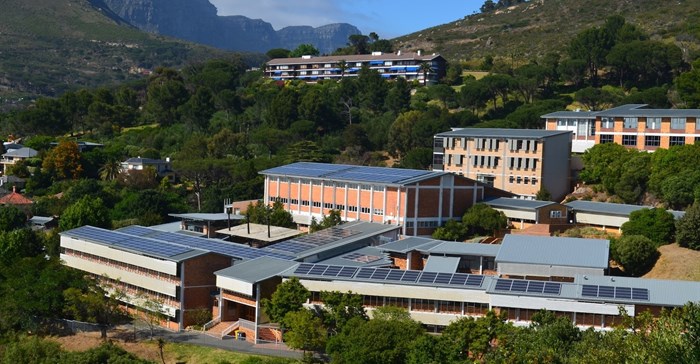
Top stories






LegalKenyan court postpones case seeking to halt Diageo's $2.3bn sale of EABL
Duncan Miriri and Emma Rumney 1 day
More news











The German International School Cape Town (DSK) in Tamboerskloof has fully embraced a green future by installing a 150kWp solar electricity system, which is designed for embedded generation that will maximise self-consumption and feed excess power back into Cape Town’s electricity grid. This is made possible by making use of the small-scale embedded generation (SSEG) tariff the City of Cape Town offers for solar systems.

“This plant teaches our learners the value of sustainable energy, generated by green technology and being conscious of environmental challenges, which is all part of the ‘going green’ campaign for our school," says DSK headmaster, Alexander Kirmse.
Schools are an excellent business case for embedded generation solar systems: During school times most power consumed comes from the solar system (maximised self-consumption) and on weekends and during school holidays the power is sold to the grid.
Three German solar companies were involved in the project. SolarWorld Africa provided the photovoltaic panels, SMA Solar Technology the solar inverters and Schletter South Africa supplied the mounting structure and installed the solar system to the school’s roof.
"Over its lifespan of at least 25 years, the solar system will save the school an enormous amount of electricity cost and will set a shining example of the quality and long-lasting performance security of German solar technology. Additionally the photovoltaic system will serve as an early introduction to the opportunities of solar photovoltaic use to the students.” The solar system runs on 442 pieces of SW 340 XL Mono solar panels and could achieve an output of up to 150kWp at any given time of full sun exposure," says Gregor Küpper, managing director of SolarWorld Africa.
The system is monitored via SMA’s Sunny Portal and during the first eight weeks of operational testing, around 38 megawatt hours (MWh) were generated of which 13 MWh were fed back into the grid. 6 SMA Sunny Tripower 25000 inverters convert the DC power from the PV modules to AC power.
Together with the initial off-grid photovoltaic system the school has been using since 2010, this full scale on-grid system that is inaugurated today will enable the learners to have access to this renewable energy technology and compare functionality and production data of both. They will also gather information of financial savings of such an investment into a renewable energy system. This will create awareness and understanding for the vast opportunities for renewable energy in South Africa and Africa.